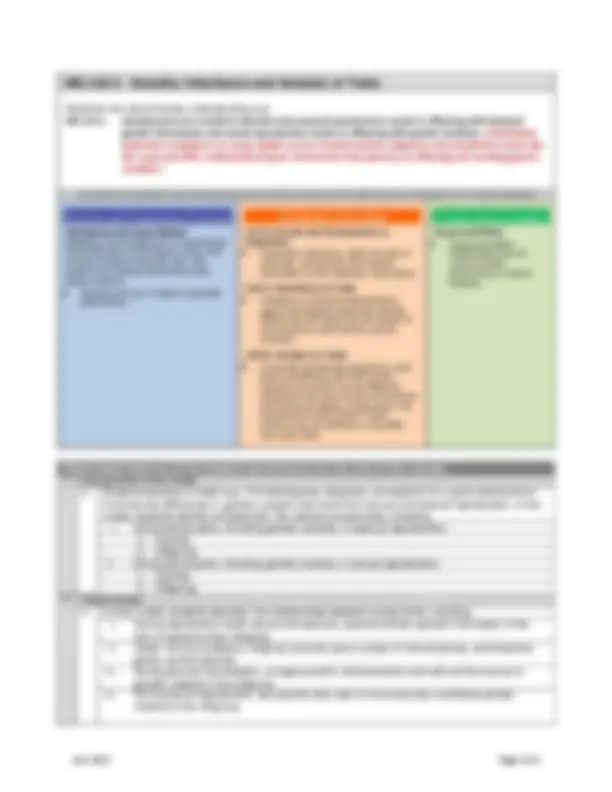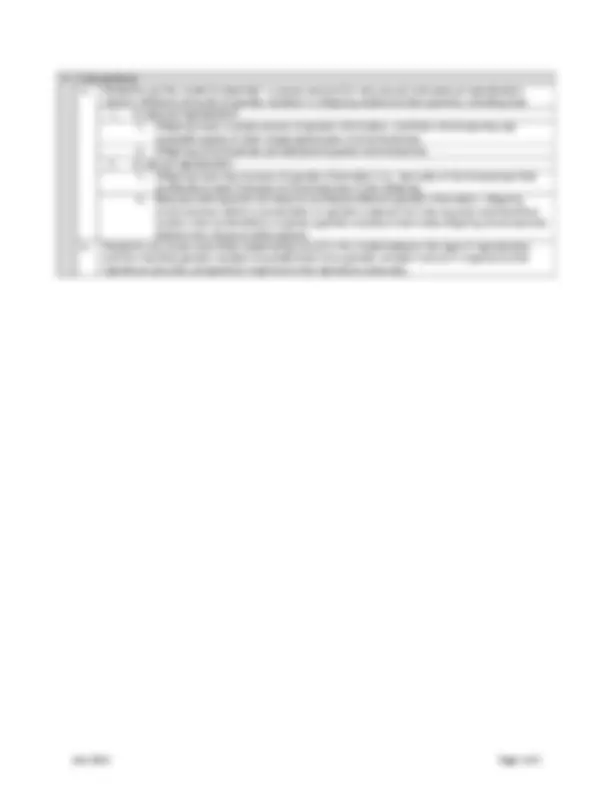




Study with the several resources on Docsity

Earn points by helping other students or get them with a premium plan


Prepare for your exams
Study with the several resources on Docsity

Earn points to download
Earn points by helping other students or get them with a premium plan
Community
Ask the community for help and clear up your study doubts
Discover the best universities in your country according to Docsity users
Free resources
Download our free guides on studying techniques, anxiety management strategies, and thesis advice from Docsity tutors
The performance expectations for students in the 6-8 grade science curriculum, specifically in the area of genetics and heredity. Students are expected to develop and use models to describe why structural changes to genes located on chromosomes may affect proteins and result in harmful, beneficial, or neutral effects on organisms. The document also covers the concepts of asexual and sexual reproduction and the resulting genetic variation.
Typology: Study notes
1 / 4

This page cannot be seen from the preview
Don't miss anything!



Students who demonstrate understanding can: MS-LS3-1. Develop and use a model to describe why structural changes to genes (mutations) located on chromosomes may affect proteins and may result in harmful, beneficial, or neutral effects to the structure and function of the organism. [Clarification Statement: Emphasis is on conceptual understanding that changes in genetic material may result in making different proteins.] [ Assessment Boundary: Assessment does not include specific changes at the molecular level, mechanisms for protein synthesis, or specific types of mutations. ]
The performance expectation above was developed using the following elements from the NRC document A Framework for K-12 Science Education :
Developing and Using Models Modeling in 6–8 builds on K–5 experiences and progresses to developing, using, and revising models to describe, test, and predict more abstract phenomena and design systems. Develop and use a model to describe phenomena.
LS3.A: Inheritance of Traits Genes are located in the chromosomes of cells, with each chromosome pair containing two variants of each of many distinct genes. Each distinct gene chiefly controls the production of specific proteins, which in turn affects the traits of the individual. Changes (mutations) to genes can result in changes to proteins, which can affect the structures and functions of the organism and thereby change traits. LS3.B: Variation of Traits In addition to variations that arise from sexual reproduction, genetic information can be altered because of mutations. Though rare, mutations may result in changes to the structure and function of proteins. Some changes are beneficial, others harmful, and some neutral to the organism.
Structure and Function Complex and microscopic structures and systems can be visualized, modeled, and used to describe how their function depends on the shapes, composition, and relationships among its parts, therefore complex natural structures/systems can be analyzed to determine how they function.
1 Components of the model a Students develop a model in which they identify the relevant components for making sense of a given phenomenon involving the relationship between mutations and the effects on the organism, including: i. Genes, located on chromosomes. ii. Proteins. iii. Traits of organisms. 2 Relationships a In their model, students describe* the relationships between components, including: i. Every gene has a certain structure, which determines the structure of a specific set of proteins. ii. Protein structure influences protein function (e.g., the structure of some blood proteins allows them to attach to oxygen, the structure of a normal digestive protein allows it break down particular food molecules). iii. Observable organism traits (e.g., structural, functional, behavioral) result from the activity of proteins. 3 Connections a Students use the model to describe* that structural changes to genes (i.e., mutations) may result in observable effects at the level of the organism, including why structural changes to genes: i. May affect protein structure and function.
ii. May affect how proteins contribute to observable structures and functions in organisms. iii. May result in trait changes that are beneficial, harmful, or neutral for the organism.
b Students use the model to describe* that beneficial, neutral, or harmful changes to protein function can cause beneficial, neutral, or harmful changes in the structure and function of organisms.
3 Connections a Students use the model to describe* a causal account for why sexual and asexual reproduction result in different amounts of genetic variation in offspring relative to their parents, including that: i. In asexual reproduction: